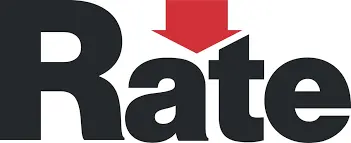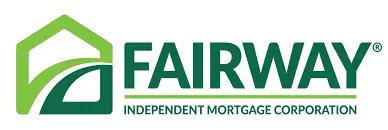Compare Current Mortgage Rates Today
December mortgage rates currently average 6.08% for 30-year fixed loans and 5.14% for 15-year fixed loans. Current average rates are calculated using all conditional loan offers presented to consumers nationwide by LendingTree’s network partners over the past seven days for each combination of loan program, loan term and loan amount. Rates and other loan terms are subject to lender approval and not guaranteed. Not all consumers may qualify. See LendingTree’s Terms of Use for more details.
Mortgage rates this week: Will home loan interest rates go down?
The current national mortgage rates forecast indicates that rates are likely to remain high compared to recent years, and stay above 6% for now.
Here are the U.S. weekly average rates from Freddie Mac’s Primary Mortgage Market Survey, as of Dec. 11, 2025:
- 30-year fixed-rate mortgage: 6.22% ( up 0.03 from last week)
- 15-year fixed-rate mortgage: 5.54% (up 0.01 from last week)
As of this week, national average rates have remained under 7% since January and are the lowest they’ve been all year.
At its most recent meeting on Dec. 9-10, the Federal Reserve chose to cut interest rates for the third time this year. Mortgage and credit card rates could fall as a result, according to LendingTree experts. The next Fed meeting is scheduled for January 26-27.
Read more about the most recent Fed meeting and how it affects interest rates.
Expert insights on mortgage rates this month
“Mortgage rates keep falling, and there’s reason to hope that they may drop below 6% in the next few months. That’s good news for home shoppers, though there are no guarantees that this downward trend will continue. Mortgage rates aren’t directly tied to the Fed’s moves the way credit card rates are.”
Current mortgage rates
Loan product | Interest rate | APR |
|---|---|---|
| 30-year fixed rate | 6.08% | 6.20% |
| 20-year fixed rate | 6.13% | 6.13% |
| 15-year fixed rate | 5.14% | 5.34% |
| 10-year fixed rate | 5.25% | 5.28% |
| FHA 30-year fixed rate | 5.66% | 6.30% |
| 30-year 5/1 ARM | 5.80% | 6.50% |
| VA 30-year 5/1 ARM | 5.27% | 5.77% |
| VA 30-year fixed rate | 5.48% | 5.68% |
| VA 15-year fixed rate | 5.14% | 5.52% |
Average rates disclaimer Current average rates are calculated using all conditional loan offers presented to consumers nationwide by LendingTree’s network partners over the past seven days for each combination of loan program, loan term and loan amount. Rates and other loan terms are subject to lender approval and not guaranteed. Not all consumers may qualify. See LendingTree’s Terms of Use for more details.
How are mortgage rates determined?
There are nine primary factors that determine your mortgage rate:
-
Your credit score
The higher your score, the lower your interest rate. -
Your down payment amount
Lenders may offer lower mortgage rates with a higher down payment. -
Your loan amount
You may get a better mortgage rate for a higher loan amount. -
Your loan program
Interest rates on Federal Housing Administration (FHA) loans and the U.S. Department of Veterans Affairs (VA) loans tend to be lower than conventional loan rates. -
Your loan term
Shorter terms usually equal lower mortgage interest rates. -
Your location
Home loan rates vary based on where you live. -
Your occupancy
You’ll get the best mortgage rates financing a home you plan to live in as your primary residence. -
Your property type
Lenders offer the most favorable mortgage rates for single-family homes. You’ll pay a higher rate for a mortgage on a condo, manufactured home or multifamily home. -
Economic factors
Inflation, the Federal Reserve’s monetary policy and U.S. Treasury bond yields can influence whether mortgage rates go up or down.
How to get the lowest mortgage rates
Boost your credit score to 780 or higher
You’ll need to aim for at least a 780 credit score to qualify for the lowest conventional loan interest rates. Need help getting started? Learn how to improve your credit score.
Make a bigger down payment or borrow less
You’ll snag the best mortgage rates with a 780 credit score and at least a 25% down payment. A lower loan-to-value (LTV) ratio (how much of your home’s value you need to borrow) means lower home loan rate offers.
Reduce your total monthly debt load
Lenders measure your debt-to-income (DTI) ratio by dividing your total monthly debt by your before-tax income. A 43% maximum DTI ratio is a common limit. A debt consolidation calculator can estimate how much a debt consolidation loan could lower your monthly payments.
Consider an adjustable-rate mortgage (ARM)
If you plan to move in a few years, an ARM loan starts with lower mortgage interest rates for a period of time. If you sell the home before that lower rate expires, you could save a lot of money in interest compared to a fixed-rate home loan.
Pick a shorter loan term
Lenders usually charge lower interest rates for shorter terms like 15-year loans. If you can afford a higher monthly payment, you’ll save hundreds of thousands of dollars over the life of the loan, according to LendingTree data.
Pay mortgage points
A mortgage point is an upfront fee equal to 1% of your total loan amount. (For example, if you borrow $300,000, one point costs $3,000.) Paying for points buys you a lower mortgage rate. Each point can usually lower your rate by 0.125% to 0.25%. For the exact cost of your mortgage point, you can check Page 2, Section A of your lender loan estimate.
Compare mortgage lenders
Comparing offers from several mortgage lenders saves you money — and not just a few dollars. A LendingTree study found that homebuyers in the nation’s largest metro areas saved an average of $76,410 over the life of their loans by comparing offers from different lenders.
How interest rates affect your monthly payment
When buying a home, higher mortgage interest rates will raise your monthly principal and interest payments.
For example, say you want to buy a house using a $350,000 home loan. Assuming a 30-year loan term, here’s what your monthly payment could look like at different interest rates (excluding property taxes and home insurance):
- 5% interest rate: Your monthly payment would be $1,878.88.
- 6% interest rate: Your monthly payment would be $2,098.43.
- 7% interest rate: Your monthly payment would be $2,328.56.
Note that if you live in an HOA community or need private mortgage insurance, your monthly payment will be higher.
Use a mortgage calculator to estimate how your interest rate will affect your monthly payment.
If you are purchasing a home, there are several ways to lower your monthly home loan payment:
- Make a larger down payment. This reduces your total loan amount, lowering the amount of interest you’ll pay. Plus, if you put down at least 20%, you can avoid private mortgage insurance (PMI).
- Choose an adjustable-rate mortgage (ARM). If you plan to live in your home for a short time, you may benefit from an ARM, such as a 5/1 ARM. With a 5/1 ARM loan, the interest rate is fixed for the first five years at a rate that’s typically lower than current 30-year fixed rates. After that, it can adjust annually based on the terms of your ARM loan.
- Pay mortgage points. You can reduce your mortgage rate by purchasing mortgage discount points, saving you quite a bit in interest charges each month and over the long term.
- Ask for a temporary mortgage rate buydown. With this option, you’ll pay a fee at closing to lower your mortgage rate for a set period. The rate increases by an agreed-upon amount each year until the final interest rate is reached, and then your home loan rate remains fixed.
Ready to estimate how much your monthly payment could be? Calculate your mortgage payment and get custom offers below.
Our picks for the best mortgage lenders of 2025
Lender | User ratings | LendingTree rating | Min. credit score | |
|---|---|---|---|---|
| (2620) Ratings and reviews are from real consumers who have used the lending partner’s services. | 580 to 680 | |||
| (952) Ratings and reviews are from real consumers who have used the lending partner’s services. | 500 to 620 | |||
| (16898) Ratings and reviews are from real consumers who have used the lending partner’s services. | 500 | |||
| (1455) Ratings and reviews are from real consumers who have used the lending partner’s services. | 620 | |||
| (36) Ratings and reviews are from real consumers who have used the lending partner’s services. | 620 | |||
User reviews coming soon | 580 to 620 | |||
| (61207) Ratings and reviews are from real consumers who have used the lending partner’s services. | 580 to 620 |
Learn more about how we chose our list of the best mortgage lenders.
How to choose a mortgage lender
The key to choosing a mortgage lender is understanding what lenders are looking for and identifying what you want from a lender. Here are some questions to consider as you shop for a lender:
- Do they offer the loan program or down payment assistance program I want to use? Not all lenders can offer every mortgage type.
- Do they have credit, debt and income requirements that I can meet? Some lenders impose stricter guidelines than those required by standard loan programs. It’s important to know this before you apply, and it’s simple to call a lender and ask so that you don’t waste your time or end up with a loan denial.
- Do they offer the methods of communication I prefer? Whether you want an online lender or one with brick-and-mortar branches, it’s important to find a lender that meets your needs.
- How long does it typically take them to close on a loan? It’s important to make sure that a lender can match your timeline, especially if you’re buying and selling a house at the same time.
- Do they have a strong reputation? Conduct basic research to ensure that any lender you consider is legitimate and trustworthy. A good starting point is online mortgage lender reviews — search the lender’s name along with the phrase “mortgage review.” You can also explore our list of the best mortgage lenders above. (Click on any lender’s logo to read a review written by LendingTree experts.)
Ready to get started? Learn how to apply for a mortgage today or enter your loan amount below.
How to get the best mortgage: Shop, compare, negotiate
This three-part strategy can help you get the best deal on a mortgage:
1. Shop around
Once you know the type of mortgage you want, start loan shopping. Get quotes from at least three different lenders. You can do this by working with a mortgage broker who can find quotes from multiple lenders or by directly contacting banks and mortgage companies. Or, you can let LendingTree help: simply enter your information once, and we’ll connect you with offers from multiple lenders.
When you apply for a mortgage, try to submit multiple applications on the same day. That way, you can make apples-to-apples comparisons, as interest rates change daily.
2. Compare loan terms
Gather loan estimates from three to five lenders and compare them side by side, paying special attention to the interest rate, fees and annual percentage rate (APR). This helps you identify the lender offering the best deal overall.
While the comparison process may sound like a hassle, it could potentially save you tens of thousands of dollars. LendingTree research shows that mortgage borrowers who take the time to compare rate offers have a very good chance — around 46% — of saving money.
As you comparison shop, you have two options for how to compare mortgage rates:
- Use an online rate-comparison site. Sites like LendingTree allow you to enter your information into one form and send it off to multiple lenders. That’s important because mortgage rates change daily and you’ll need rates gathered on the same day to make a good comparison.
- Reach out to lenders yourself. You can call lenders, go to a bank near you, or view rates online at many lenders’ websites. But if you’re a first-time homebuyer with a lot of questions, or you have a complicated or unique financial situation, it may make the most sense to speak to someone.
3. Negotiate interest rate and fees
You can benefit from negotiating at almost every stage of the homebuying process. Many people spend a ton of energy negotiating the home’s price but miss out on the chance to negotiate a lower mortgage rate or lower fees.
- Once you have multiple rate offers, you can ask a lender to match or beat a competitor’s rate.
- You should also be prepared to negotiate closing costs and fees. Look at Page 2 of your loan estimate, which lists the fees you can negotiate or shop for (as well as those you cannot). Origination charges, application fees and underwriting fees are typically negotiable.
Frequently asked questions
A mortgage interest rate tells you how much you’ll have to pay as a fee for borrowing the funds to purchase a home. Interest rates are typically expressed as a percentage of the total amount you’ve borrowed.
Be careful not to confuse interest rates and annual percentage rates (APRs) — both are expressed as a percentage, but they’re very different. A typical interest rate accounts only for the fees you’re paying a lender for borrowing money. An APR, on the other hand, captures a broader view of the costs you’ll pay to take out a loan, including the interest rate plus closing costs and fees.
Still confused? Read our guide to better understand an APR versus interest rate.
Once you’ve selected your lender, you should ask your loan officer about the options you have to lock in a rate. Mortgage rate locks usually last between 30 and 60 days, and they exist to give you a guarantee that the rate your lender offered you will still be available when you actually close on the loan. If your loan doesn’t close before your rate lock expires, you should expect to pay a rate lock extension fee.
You’ll need to apply for mortgage preapproval to find out how much you could qualify for. Lenders use the preapproval process to review your overall financial picture — including your assets, credit history, debt and income — and calculate how much they’d be willing to lend you for a mortgage.
Use the loan amount printed on your preapproval letter as a guide for your house-hunting journey, but avoid borrowing the maximum. Our mortgage calculator can help you determine whether your mortgage payment leaves enough room in your budget to comfortably cover your other monthly bills.
The best type of mortgage loan will depend on your financial goals — while some loan types consistently offer lower rates, they may do so at the expense of higher monthly payments or complicated repayment terms. Before signing on the dotted line, weigh the pros and cons of a 15- versus 30-year loan and take time to understand ARM rates and how they differ from traditional fixed mortgage rates.
If you’re considering an FHA loan because its interest rate is lower than a conventional loan rate, make sure you understand why you should look at APRs, not just interest rates, when comparing FHA and conventional loans.
A teaser rate is a lower initial rate offered on a mortgage loan for a set time period before the actual fixed mortgage rate goes into effect. Teaser rates are often obtained through an adjustable-rate mortgage (ARM) loan that have 3-, 5- or 7-year options.
Mortgage closing costs usually range anywhere from 2% to 6% of your total home loan amount. The cost can vary depending on many factors, including your lender and how much you’re borrowing. It’s possible to get the seller or lender to pay a portion or all of these costs.
The Fed’s monetary policy directly affects adjustable-rate mortgages, since their interest rates are calculated using a number — known as an index — that fluctuates with the broader economy.
The Fed’s policy only indirectly impacts fixed-rate mortgages, which can move more independently and, in some cases, move in the opposite direction of the federal funds rate.
We may see mortgage rates as low as 3% again, but likely not anytime soon. The good news is the Federal Reserve cut interest rates three times in 2024, for the first time since 2020, which may help push mortgage rates down a bit as time goes on. Regulators have signaled that they expect to make two cuts in 2025.











